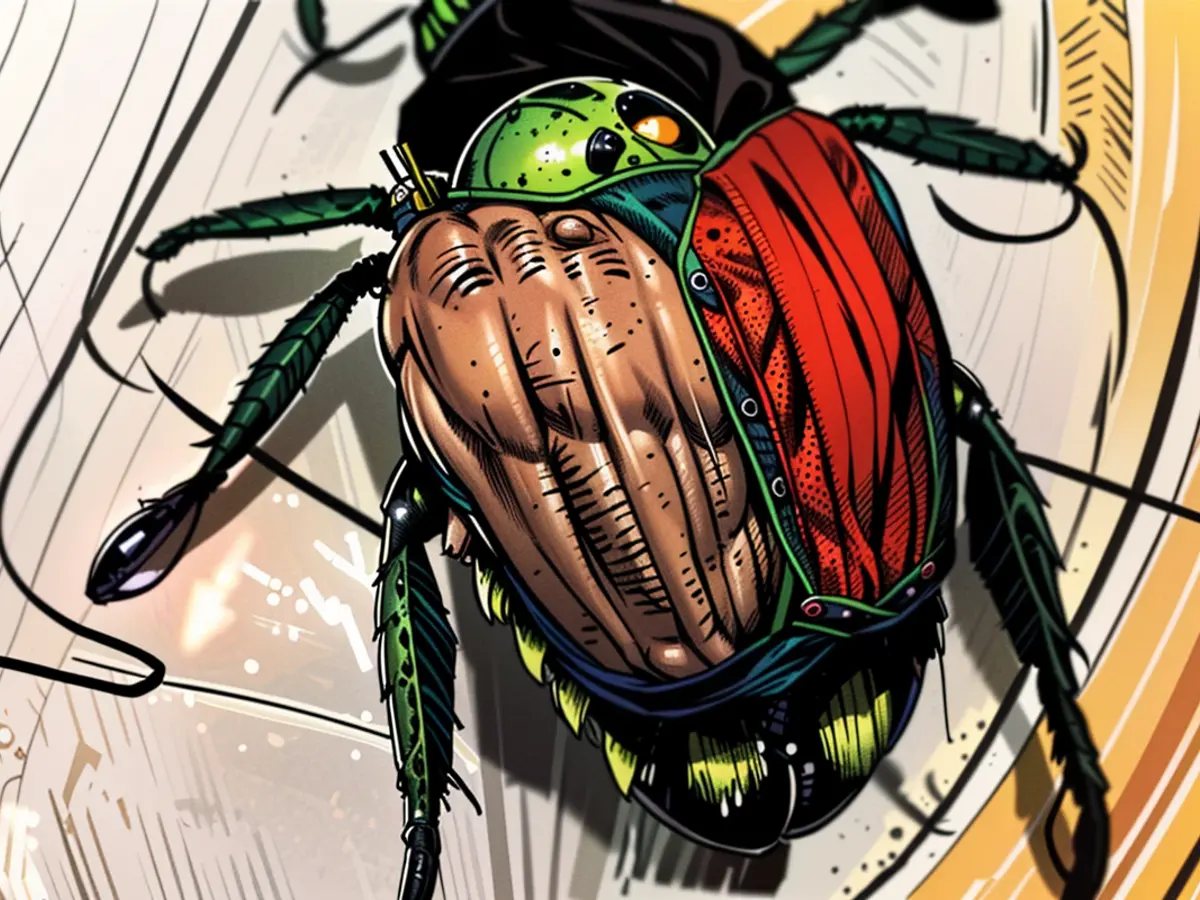Invasive Species - Gagageny-Colony in Switzerland poses a threat to Germany
According to new findings of the voracious Japanese beetle in the Switzerland area near the border - including a larger colony - the German side is on alert. "The new Japanese beetle findings in the border city have intensified the threat situation for Baden-Württemberg and Germany," said Bernhard Schäfer, who leads the responsible specialist institute for plant health issues at the Julius Kühn-Institute in Braunschweig, the German research institute for cultivated plants. The beetle can easily and unintentionally be brought everywhere to Germany, for example as a "blind passenger" on vehicles or with plants and plant parts like a bouquet of flowers.
Natural counterparts are lacking
The Asian-origin Japanese beetle (Popillia japonica) is classified as a pest in the European Union, capable of causing significant damage. The animals feed on orchards, vineyards, forests, lawns, and gardens and consume everything bare on more than 300 plant species. Natural enemies in this area are nonexistent.
The horticulture, forestry, and home gardens are threatened with massive damages from an invasion, according to experts. Trees are often left with only the skeletons of their leaves. Large damages can also be caused by the larvae on meadows and lawn areas: They feed on grass roots and leave brown patches with dead plants.
Infested zone extends to Germany
Findings must be reported in the EU and Switzerland. "So far, only individual beetles have been found on Swiss territory in the tri-border area," explained the JKI. Now, it has been discovered at two more locations, one of which is a larger colony. A contaminated zone has been marked around the discovery sites. "A buffer zone of about five kilometers around the discovery sites has been designated," it was stated. "This includes parts of the German communities of Grenzach-Wyhlen and Weil am Rhein in the Lörrach district."
From the buffer zone, only green goods may be taken out if it is ensured that no beetles are transported, the Baden-Württemberg responsible agricultural technology center Augustenberg (LTZ) in Karlsruhe recently announced.
Freezing beetle finds
To prevent settlement in Germany, people are asked to report suspicious beetle finds to the respective plant protection services in each federal state. This assistance is crucial to prevent damages in Germany, emphasized Schäfer. The LTG asks the population to catch, freeze, and photograph beetles that match the characteristics of the Japanese beetle. The photo should be sent with the location information to [email protected] via email. Experts will evaluate it.
The Japanese beetle is only about one centimeter long, has a metallic shiny green head and brown wings. Distinctive features are five white hair tufts on each abdominal side and two white hair tufts at the end of the abdomen. The Japanese beetle is often confused with the garden lawn beetle or the larger rose beetle - native species that experts claim cause negligible damages.
- To mitigate the risk of the Japanese beetle spreading further within Germany, the Julius Kühn-Institute in Baden-Württemberg has encouraged citizens to report any suspected beetle sightings to local plant protection services.
- The discovery of the Japanese beetle in Switzerland near the border with Germany has raised concerns within the agriculture sector, as the insect is classified as a pest by the European Union and has the potential to cause significant damage to crops and plants.
- The Julius Kühn-Institute, a German research institute based in Brunswick, is leading the response to the invasive Japanese beetle, aiming to develop strategies to prevent its spread across Europe and protect agrarian crops and forests.
- The Japanese beetle, originating from Asia, poses a threat to various types of plants, including orchards, vineyards, forests, lawns, and gardens, as it feeds on over 300 plant species, leaving behind only the bare skeletons of leaves and causing brown patches on meadows and lawn areas.
- In the past, the Japanese beetle has already caused significant damage in parts of Asia and the United States, leading agricultural experts to urge European countries, including Germany and Switzerland, to take immediate action against this threat to their food security and biodiversity.
- Within the European Union, the Julius Kühn-Institute serves as a critical partner in the fight against pests like the Japanese beetle, sharing knowledge and resources with member states to protect Europe's agricultural sector and maintain the overall health of its forests and natural ecosystems.







